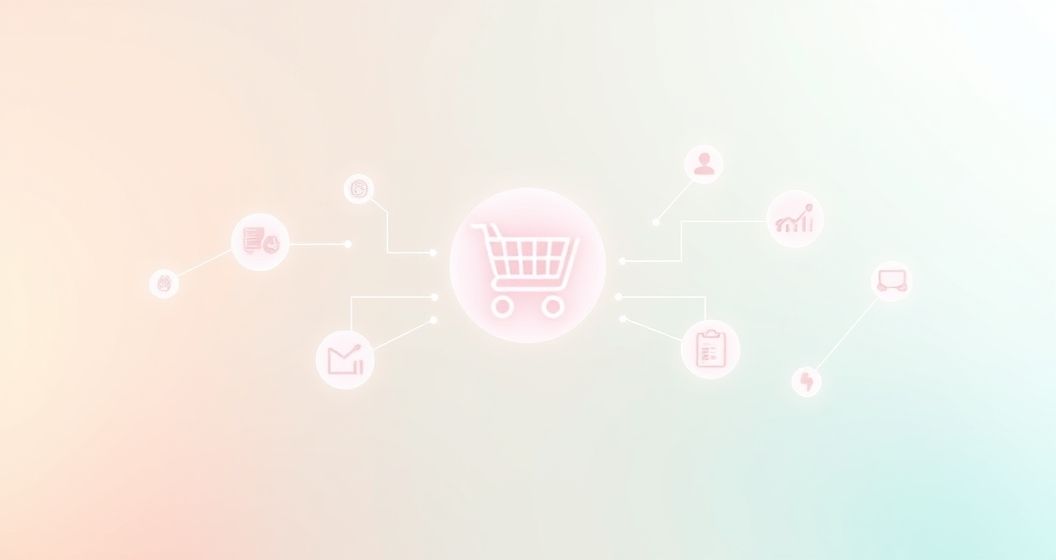For many artisans and entrepreneurs, Etsy offers a vibrant marketplace to showcase unique creations. However, managing a thriving Etsy shop involves more than just crafting quality products; it demands efficient operations. Etsy integrations provide the essential tools to automate routine tasks, streamline workflows, and ultimately scale a business effectively. These powerful connections between your Etsy shop and other software platforms are pivotal for optimizing everything from inventory and order management to marketing and financial tracking, allowing sellers to focus on creativity and growth.
Streamlining Your Etsy Business: What Integrations Offer
Etsy integrations refer to third-party applications and software solutions designed to connect seamlessly with your Etsy shop. These connections enable data exchange and automated processes, transforming manual, time-consuming tasks into efficient, hands-free operations. From synchronizing inventory across multiple sales channels to automating shipping label creation, integrations are built to enhance productivity and reduce operational overhead. They empower Etsy sellers to manage their businesses more professionally, ensuring accuracy and consistency across all aspects of their e-commerce journey.
The core benefit of leveraging these integrations lies in their ability to centralize critical business functions. Instead of manually updating spreadsheets or switching between various platforms, sellers can access a unified dashboard that provides a holistic view of their sales, inventory, and customer interactions. This consolidation not only saves precious time but also minimizes the potential for human error, leading to a smoother customer experience and a more profitable business model. Understanding these advantages is the first step towards a more optimized Etsy presence.
1. Seamless Inventory and Order Synchronization
One of the most critical challenges for Etsy sellers, especially those operating across multiple platforms, is managing inventory accurately. Integrations designed for inventory and order synchronization automatically update stock levels across all sales channels whenever a sale occurs on Etsy or elsewhere. This proactive management prevents overselling, reduces the risk of disappointing customers, and ensures that available products are consistently reflected. Furthermore, these tools often centralize order processing, allowing sellers to view, manage, and fulfill all orders from a single interface, significantly reducing administrative burden and improving fulfillment speed.
2. Efficient Shipping and Fulfillment Automation
Shipping logistics can consume a substantial portion of an Etsy seller’s time. Shipping integrations automate the entire fulfillment process, from generating shipping labels and tracking numbers to notifying customers of their package’s journey. Many services offer discounted shipping rates by comparing various carriers, potentially leading to significant cost savings. These tools also integrate directly with major postal services, allowing for bulk label printing and scheduled pickups. This automation frees up sellers to focus on product creation and marketing, while ensuring timely and professional delivery experiences for buyers.
3. Integrating with Print-on-Demand and Dropshipping Services
For sellers utilizing print-on-demand (POD) or dropshipping models, integrations are indispensable. These tools directly link an Etsy shop to a POD or dropshipping provider, automating the transfer of orders, product designs, and customer information. When a sale is made, the integration automatically sends the order to the supplier for production and shipping, eliminating manual order entry and potential errors. This seamless connection allows sellers to offer a wide range of products without holding physical inventory, expanding their catalog and scaling their business with minimal upfront investment or logistical complexities.
4. Robust Financial Tracking and Accounting Connections
Maintaining accurate financial records is crucial for any business, and Etsy shops are no exception. Accounting integrations automatically pull sales data, fees, and expenses directly from Etsy into a chosen accounting software. This automation simplifies bookkeeping, tax preparation, and financial analysis, saving countless hours typically spent on manual data entry. Sellers can easily track profitability, understand their cash flow, and generate comprehensive financial reports. These integrations provide a clear picture of a shop’s financial health, enabling informed decisions for sustained growth and profitability.
5. Enhancing Marketing Reach and Social Media Presence
Effective marketing is key to attracting new customers and retaining existing ones on Etsy. Marketing integrations allow sellers to connect their Etsy shop with various promotional tools, such as email marketing platforms, social media schedulers, and advertising management systems. These connections can automate the sharing of new listings, promote sales, and build targeted email lists based on customer purchase history. By streamlining marketing efforts, sellers can amplify their brand’s reach, drive traffic back to their Etsy shop, and cultivate a loyal customer base more efficiently and consistently.
6. Advanced SEO and Performance Analytics for Growth
Understanding shop performance and optimizing for visibility are vital for Etsy success. Integrations focused on SEO and analytics provide valuable insights into keyword effectiveness, listing performance, and customer behavior. These tools can help sellers identify high-ranking keywords, analyze competitor strategies, and track the impact of changes to their listings. By leveraging data-driven insights, sellers can refine their product descriptions, tags, and titles to improve search engine rankings both within Etsy and on external platforms, ultimately leading to increased visibility and higher conversion rates.
Choosing the Right Etsy Integrations for Sustainable Growth
The strategic adoption of Etsy integrations is a cornerstone for any seller aiming for efficiency and long-term success. By carefully evaluating business needs, sales volume, and future growth aspirations, sellers can identify the most impactful tools to incorporate. The goal is not to adopt every available integration, but rather to select those that genuinely address operational bottlenecks and enhance core business functions. A well-integrated Etsy shop is a well-oiled machine, capable of handling increased demand, delivering exceptional customer experiences, and freeing up the seller to focus on their passion: creating and selling unique items to a global audience.






